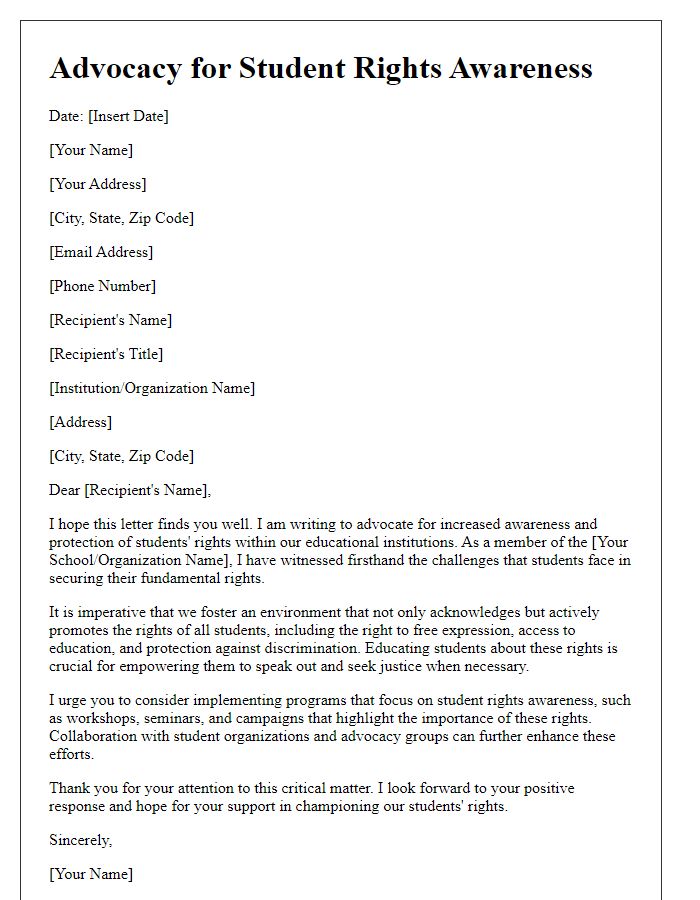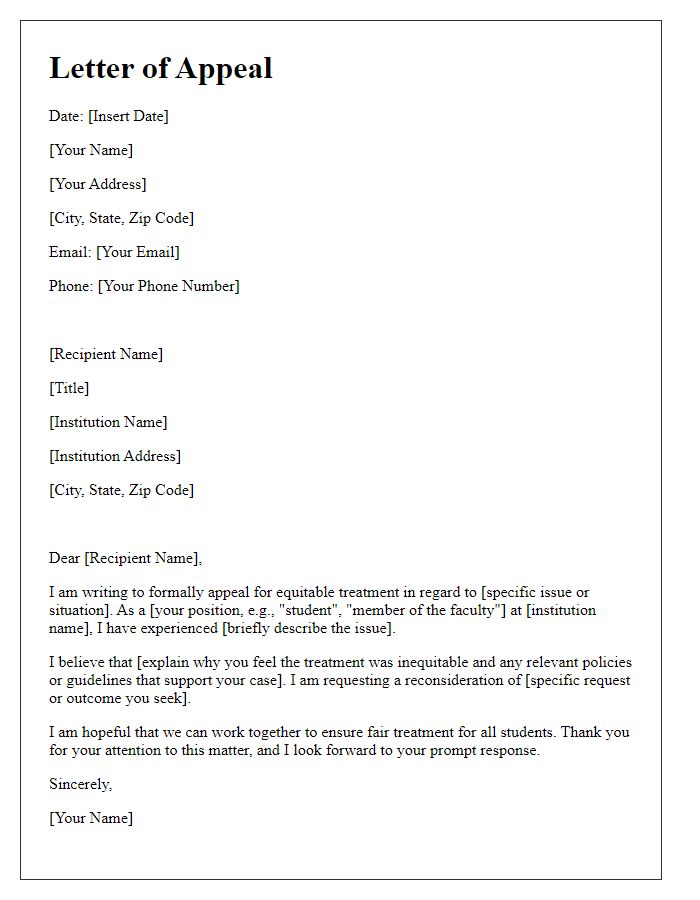In today's educational landscape, understanding and advocating for student rights is more crucial than ever. Every student deserves a voice and the opportunity to thrive in a supportive environment, free from discrimination or unfair treatment. By highlighting the importance of these rights, we can empower students to take action and ensure their educational experiences are both equitable and enriching. To delve deeper into the nuances of student rights protection, we invite you to read more about this vital topic.

Clear statement of purpose.
Student rights protection organizations aim to advocate for the rights of students within educational institutions, ensuring equitable treatment, access to resources, and a safe learning environment. These organizations work to address issues such as discrimination, harassment, and unequal opportunities, promoting policies that uphold student dignity and well-being. Key entities involved include school administration, legal bodies, and community organizations that focus on education rights. Through workshops, awareness campaigns, and legal aid, student rights protection initiatives strive to empower students and foster a culture of respect and accountability in educational settings.
Reference to relevant regulations or policies.
The protection of student rights is governed by various regulations and policies, such as Title IX of the Education Amendments of 1972, which prohibits sex-based discrimination in educational institutions receiving federal assistance. Additionally, the Family Educational Rights and Privacy Act (FERPA) safeguards students' personal information, granting them rights to access their educational records. Schools must comply with the Individuals with Disabilities Education Act (IDEA), ensuring that students with disabilities receive appropriate services and accommodations. State laws, such as anti-bullying statutes, reinforce these protections by mandating schools to establish safe learning environments. Violations of these regulations can lead to investigations by the U.S. Department of Education or state education agencies, emphasizing the critical nature of enforcing students' rights across all educational settings.
Identification of specific rights being addressed.
Students' rights encompass various critical areas within educational environments aimed at safeguarding their protection and fostering an equitable learning atmosphere. These rights include the right to free speech--where students can express their opinions without fear of censorship; the right to privacy--ensuring that personal information and communications remain confidential, particularly under regulations such as the Family Educational Rights and Privacy Act (FERPA); and the right to equal educational opportunities--mandating that no student faces discrimination based on race, gender, disability, or socioeconomic status. Additionally, students possess the right to a safe learning environment, which is vital for their mental and physical well-being, covering aspects like protection against bullying and harassment, supported by legislation like Title IX. Each of these rights plays a vital role in creating an atmosphere where students can thrive academically and personally.
Contact information for further assistance.
Student rights protection organizations provide essential resources to assist individuals facing discrimination, harassment, or unfair treatment in academic settings. Students can reach out to entities such as the American Civil Liberties Union (ACLU), which operates nationwide with various branches addressing local concerns, or the Student Legal Service (SLS) at universities, offering legal advice tailored specifically for student issues. The National Education Association (NEA) also advocates for educators' rights while focusing on student rights in education. Additionally, for issues pertaining to specific legislations and federal mandates, students may contact the U.S. Department of Education's Office for Civil Rights. Each of these organizations maintains accessible hotlines and online support services, ensuring students have the necessary tools for advocacy and resolution.
Polite and respectful tone.
Students face numerous challenges in educational environments, including issues related to their rights and protections. These challenges can manifest in areas such as free speech, access to resources, and equitable treatment. Institutions, such as public school districts or universities, often have specific guidelines that aim to safeguard student rights. Awareness of these rights is essential for students, especially in instances of discrimination or harassment. Legal entities, like the U.S. Department of Education, enforce policies under Title IX or the Family Educational Rights and Privacy Act (FERPA) to ensure compliance. Engagement in student advocacy groups can be a proactive approach, fostering an atmosphere of respect and understanding, and providing a platform for voicing concerns effectively.













Comments